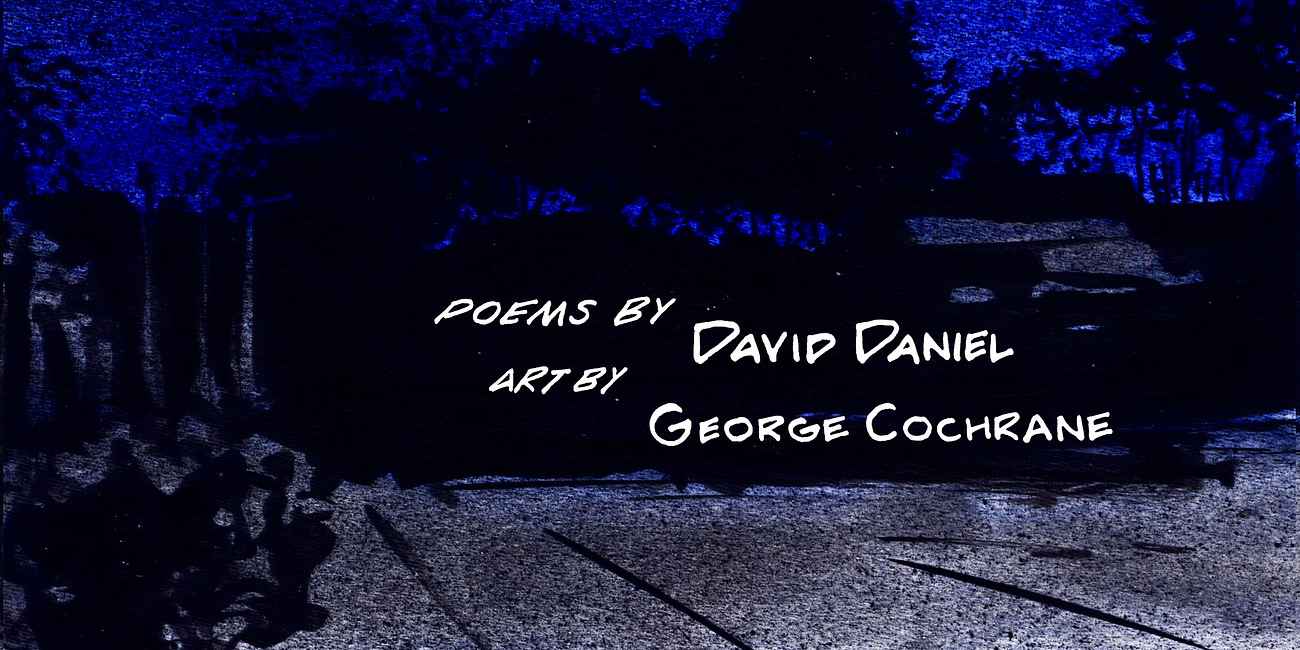Welcome to another post looking into the process behind making a page of artwork to accompany David Daniel’s poems. This time it’s “Honeysuckle.”

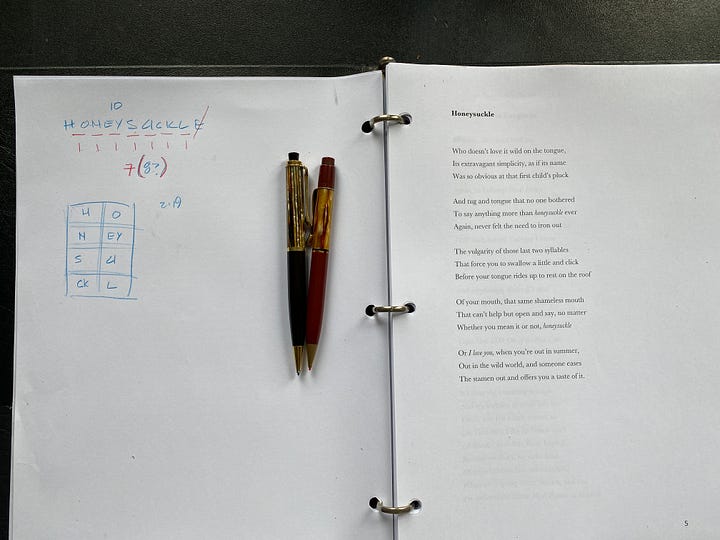
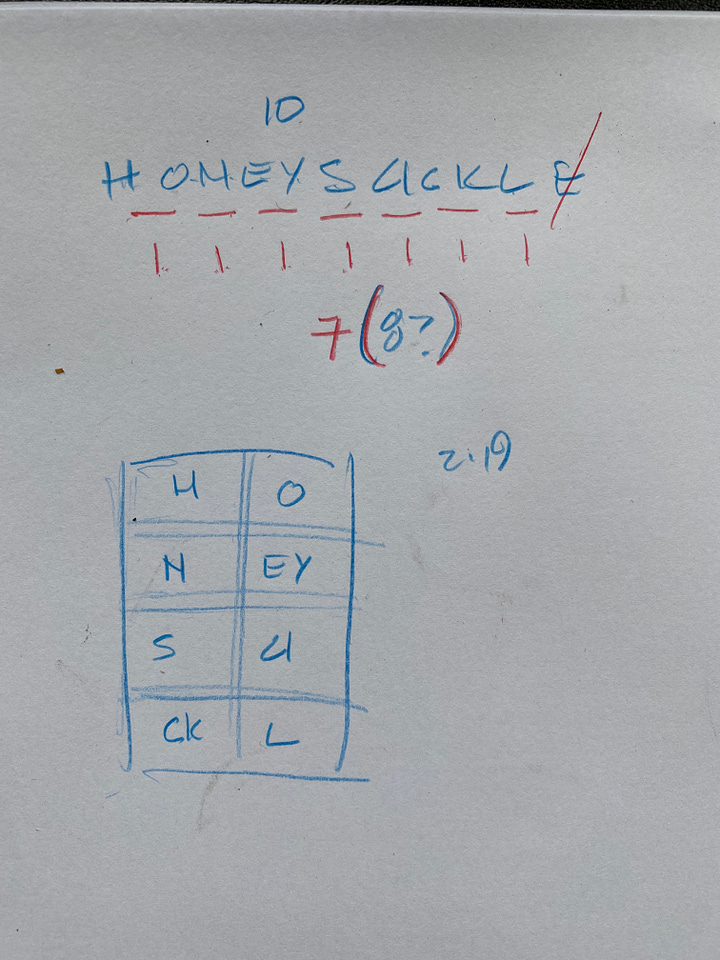
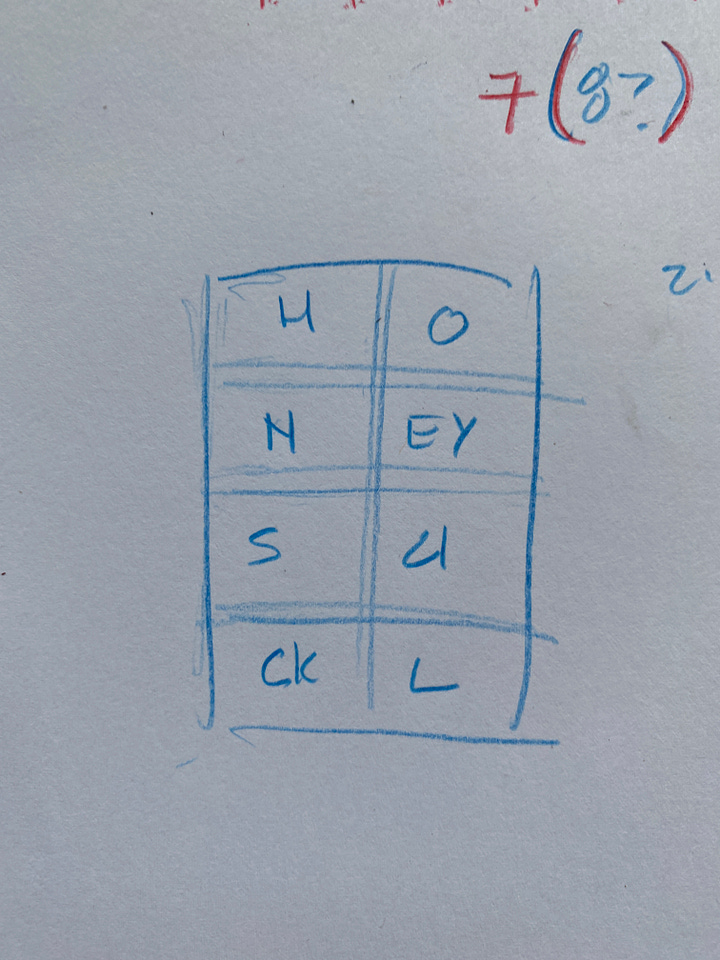
Of the thirty poems that comprise What Love Is, I chose ”Honeysuckle” to go first.
I said “yes” when David asked me if I would create art to go with his poems, though I had no idea what I’d wind up making. Mostly, I had in mind the kind of art I didn’t want to make. It’s often been the case for me that poem art has, at worst, no apparent relation to the verse, or it’s simply an illustrative “still” from a line or two. I didn’t want to do either.
There’s an idea that comes from making comic books about the way the reader constructs meaning and understanding differently if there are pictures or not. That is, a good comic tells only half the story with the words and the other half with pictures. Then the reader has to take two pieces of incomplete information and put them together themselves, activating a different mechanism for meaning.
I wanted my art to function in a similar way by presents another kind of challenge to that of the poem itself, another puzzle. Art that wouldn’t distract, dilute, or simplify, but rather art that offers another route to meaning. Or, as good poems do, suggest the simultaneous multiplicity of meaning. Plus, my POV is part of the whole mix…
“Honeysuckle” as my first illuminated poem serves as a manifesto of sorts. A declaration that in this mash-up of oblique and literal impulses, my art would be different.
The title suggests the poem is about Honeysuckle. Naturally, my first thought was to make an image of a Honeysuckle: woodcut, ink drawing, oil painting, etc. But the poem isn’t really about the plant, it’s about the experience of saying the word “Honeysuckle.”
But how do you draw sound? What does it look like? How do you draw what your mouth feels like when you say a certain word?
In the photos above, you can see that I had the idea fully formed at the start. Phonetics. Mouth shapes.
I broke the word into each individual sound and then found those sounds on a mouth sounds chart.
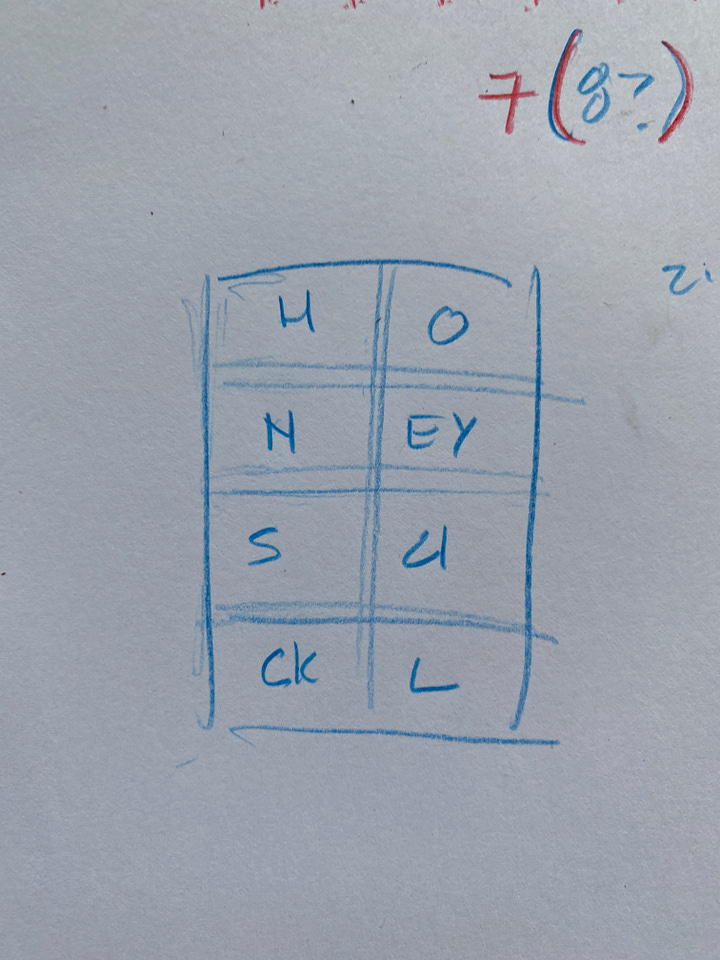
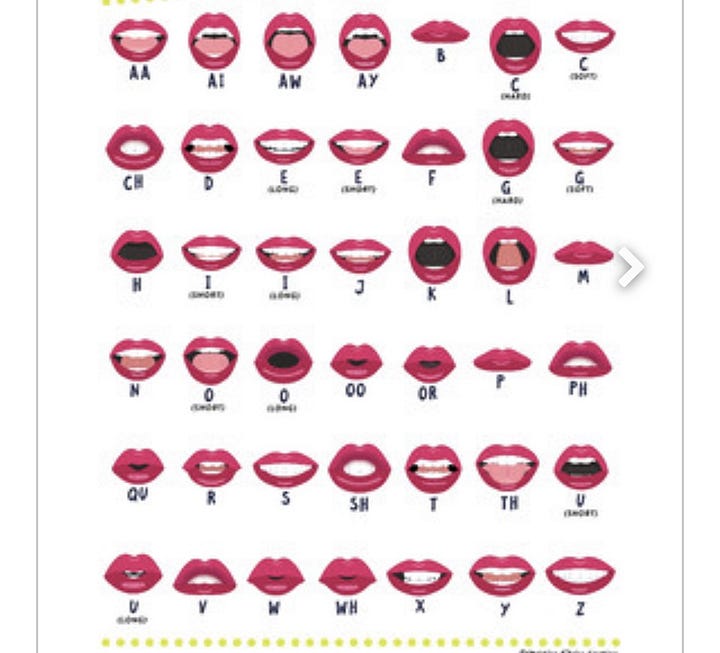
At this point, the page sort of made itself. First comes the pencils.
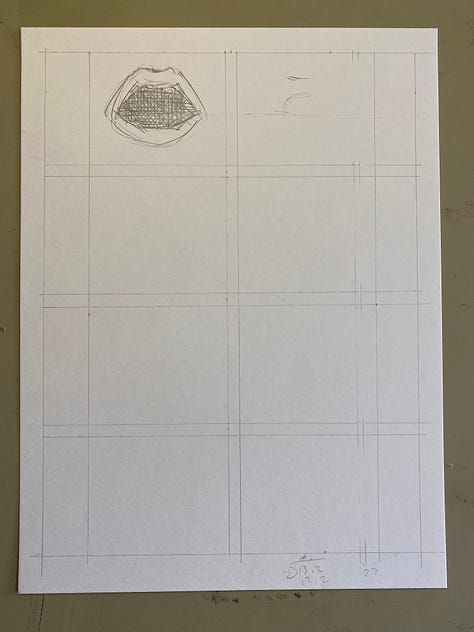



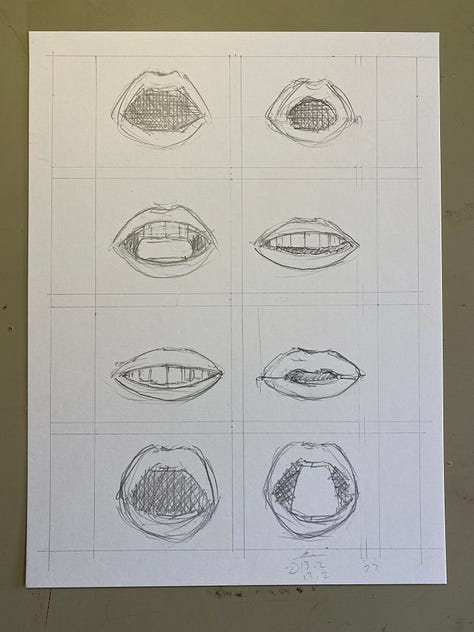

India ink panels next.
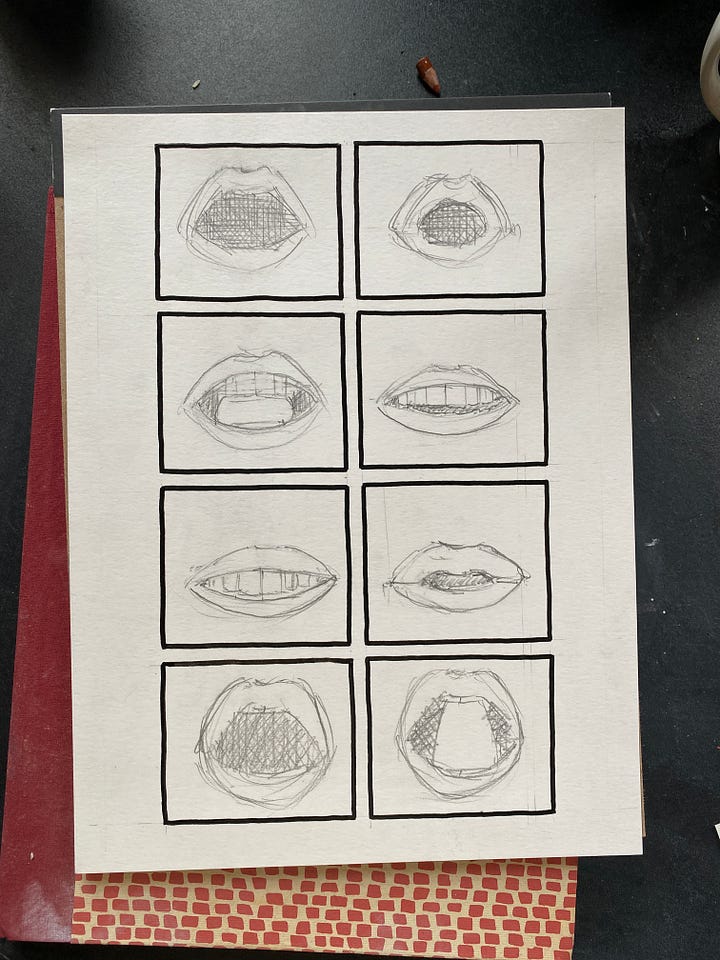
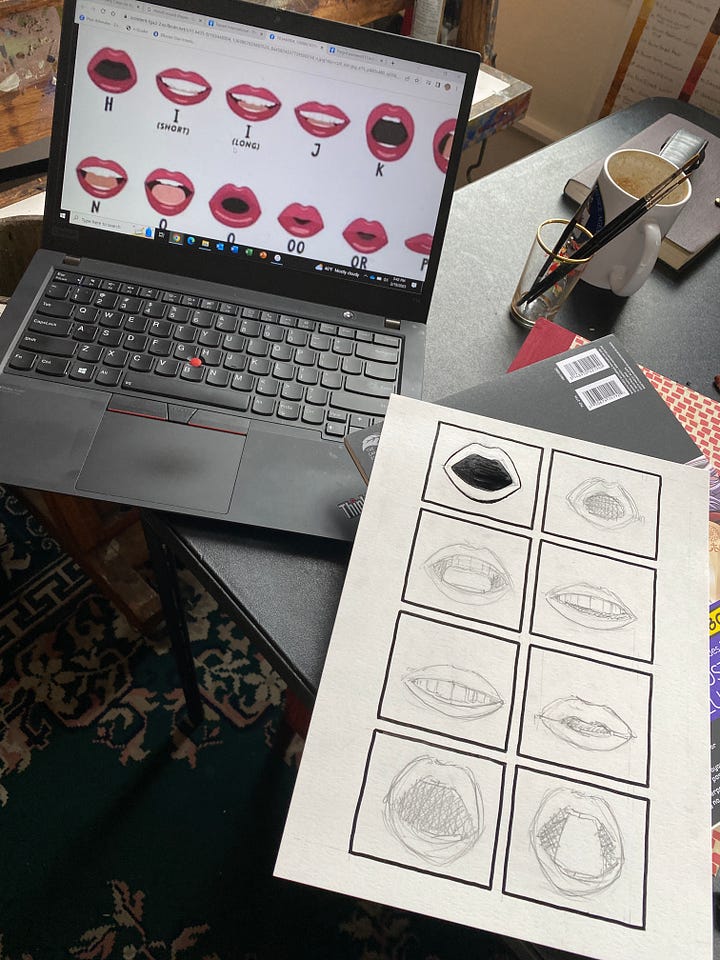
More India ink and then watercolor.

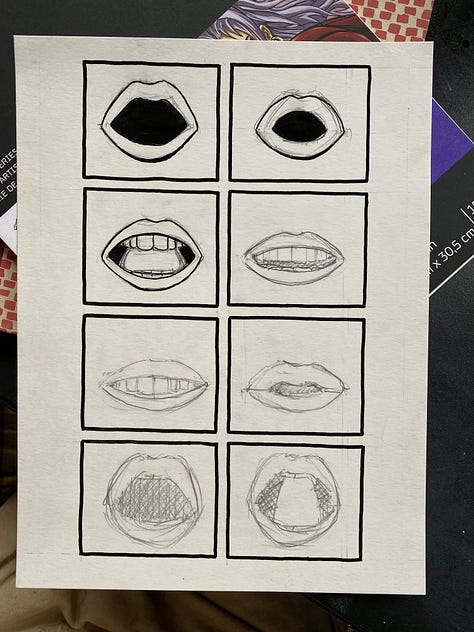
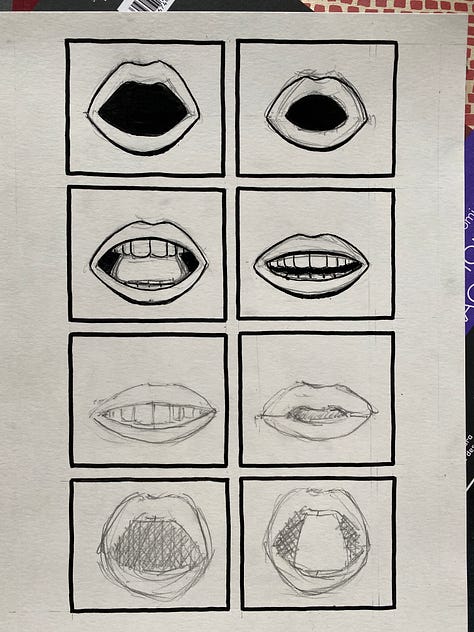

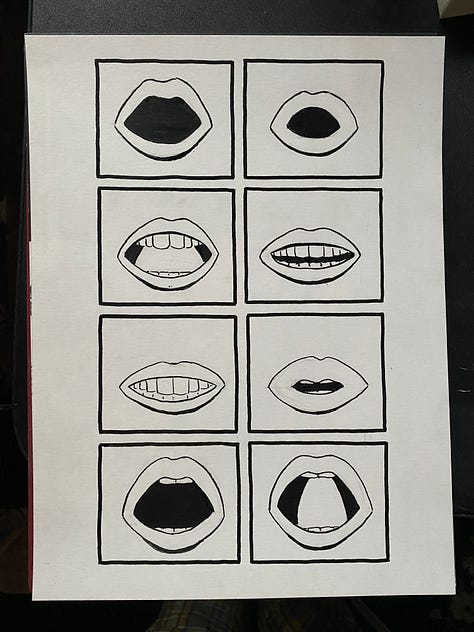
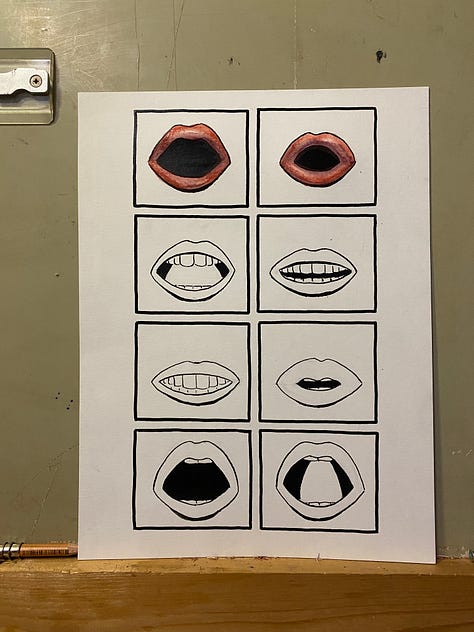
The finished page.
A note on the text: in the graphic novel poems (Coyote, The Kiss, White People Trying) I hand-letter the poems in my comic font. “Honeysuckle” is one of David’s poems in What Love Is: Book One that I don’t. But I wanted his words to always look like something on the page, something beyond “Baskerville.”
But what does the writer’s hand look like if they compose on a computer? Is it the font they choose? How good their printer is?
When a writer types, the physical act of writing ink and metal are pressed into the paper, leaving imperfect traces of the writer’s hand. Perfect.
I asked David to type up the poem on his typewriter and send it to me. We used it. Now, when the art appears across from the verse, the text has a more “handmade” feel. (We did this for “The November Meteors, too.)
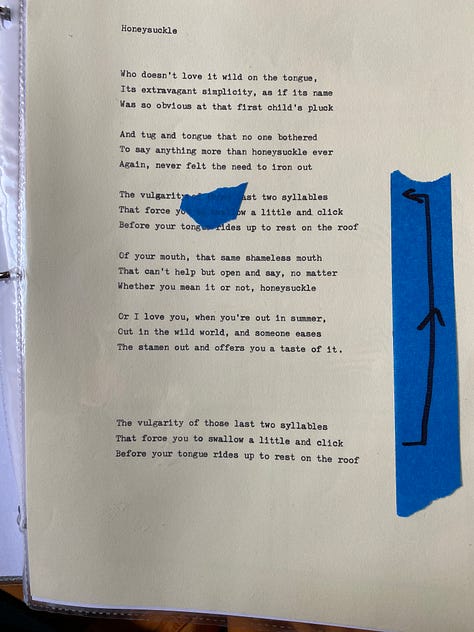
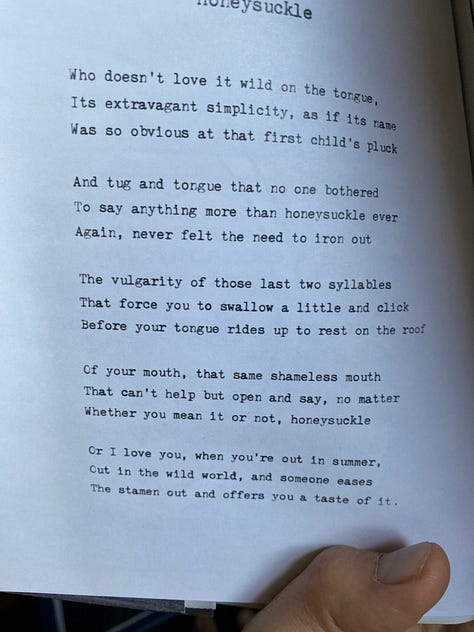
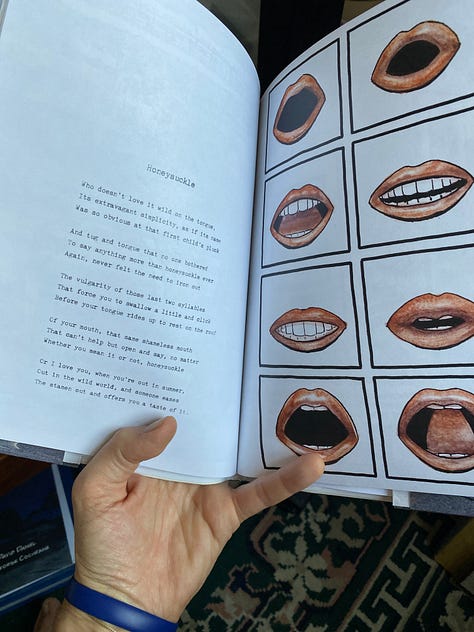
I hope you enjoyed this short excursion into making art for What Love Is: Book One.
Please like, share, and subscribe for free. Thank you!
I’ve written a few other posts about the project, including two that serve as general introduction to the collaboration. Here they are.
What is love?
What is What Love Is? The short answer is that it’s a long story. A story that begins with a friendship that began more than a decade ago at Fairleigh Dickinson University in Florham Park, N.J., when I met fellow professor David Daniel.
What is love?
[Continued from “The story of What Love Is: Book One (part one)”] The story picks up when I met Dante. In 2014 my work on Long Time Gone shifted to the back-burner, temporarily displaced by the offer to make a new illuminated manuscript of the Divine Comedy
Here are posts looking at individual poems.
"Coyote," Illuminated
I’ve enjoyed writing here in previous posts about my collaboration with poet David Daniel on our new book, What Love Is: Book One (links at bottom). If you enjoy this one, I hope you take a look when you reach the end. Or, if you want to start with our curious origin story, maybe head there first.
"The November Meteors," Illuminated
Greetings, poetry and art lovers! Here’s another post detailing the process of making a page of art for David’s new poem, “The November Meteors.” Some of the poems appearing in our new book require a complex approach to illuminating the verse. Not so with this poem. This was an easy one.
Thanks for your time and interest! Stay tuned for more. Subscribe for more derived directly to you inbox.





